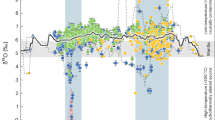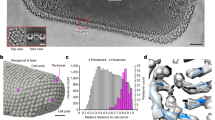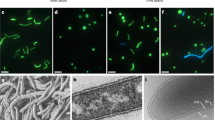Abstract
THE role of silicon in living systems has only recently begun to be understood. Apart from being an important structural component of diatoms and silicoflagellates1, some freshwater flagellates2, higher plants, sponges and other organisms3, it is necessary for DNA polymerase activity in diatoms4 and for bone and tooth development in certain vertebrates5. Silicified algal species are known (or assumed) to have an obligate, concentration-dependent silicon requirement for growth6,2, and transport systems for the accumulation of silicic acid (Si(OH)4) have been described7; however, the uptake of Si(OH)4 by nonsilicified algae has never been reported. Here we report the accumulation of significant amounts of silicon by the planktonic marine alga Platymonas sp. (isolated during the summer of 1954 from Great Pond, Falmouth, Massachusetts). This alga is very close to, or may be an isolate of P. suecica (personal communication from R. Norris) and has no known silicon requirement, growing equally well in Si-rich and Si-poor environments. Because Si(OH)4 is a potentially limiting nutrient for diatoms8, the removal of available Si(OH)4 from the environment by organisms that do not require it could play an important role in phytoplankton competition and succession. This phenomenon could also be important in the cycling of silicon in the ocean.
This is a preview of subscription content, access via your institution
Access options
Subscribe to this journal
Receive 51 print issues and online access
$199.00 per year
only $3.90 per issue
Buy this article
- Purchase on Springer Link
- Instant access to full article PDF
Prices may be subject to local taxes which are calculated during checkout
Similar content being viewed by others
References
Darley, W. M. in Algal Physiology and Biochemistry (ed. Stewart, W. D. P.) 665–675 (Blackwell, Oxford, 1974).
Klaveness, D. & Guillard, R. R. L. J. Phycol. 11, 349–355 (1975).
Allison, A. C. Proc. R. Soc. B 171, 19–30 (1968).
Darley, W. M. & Volcani, B. E. Exp. Cell Res. 58, 334–342 (1969).
Carlisle, E. M. Fedn Proc. 33, 1758–1766 (1974).
Paasche, E. Mar. Biol. 19, 117–126 (1973).
Azam, F., Hemmingson, B. B. & Volcani, B. E. Arch. Mikrobiol. 97, 103–114 (1974).
Dugdale, R. C. Geoforum 11, 47–61 (1972).
FWPCA Methods for Chemical Analysis of Water and Wastes 240 (US Department of the Interior, Washington DC, 1969).
Guillard, R. R. L. & Ryther, J. Can. J. Microbiol. 8, 229–239 (1962).
Strickland, J. D. H. & Parsons, T. R. A Practical Handbook of Seawater Analysis, 167 (Fisheries Research Board of Canada, 1968).
Rowsell, E. V. & Leonard, R. A. Biochem. J. 70, 57–61 (1958).
Manton, I. & Parke, M. J. Mar. Biol. Ass. U.K. 45, 743–754 (1965).
Author information
Authors and Affiliations
Rights and permissions
About this article
Cite this article
FUHRMAN, J., CHISHOLM, S. & GUILLARD, R. Marine alga Platymonas sp. accumulates silicon without apparent requirement. Nature 272, 244–246 (1978). https://doi.org/10.1038/272244a0
Received:
Accepted:
Issue Date:
DOI: https://doi.org/10.1038/272244a0
Comments
By submitting a comment you agree to abide by our Terms and Community Guidelines. If you find something abusive or that does not comply with our terms or guidelines please flag it as inappropriate.



